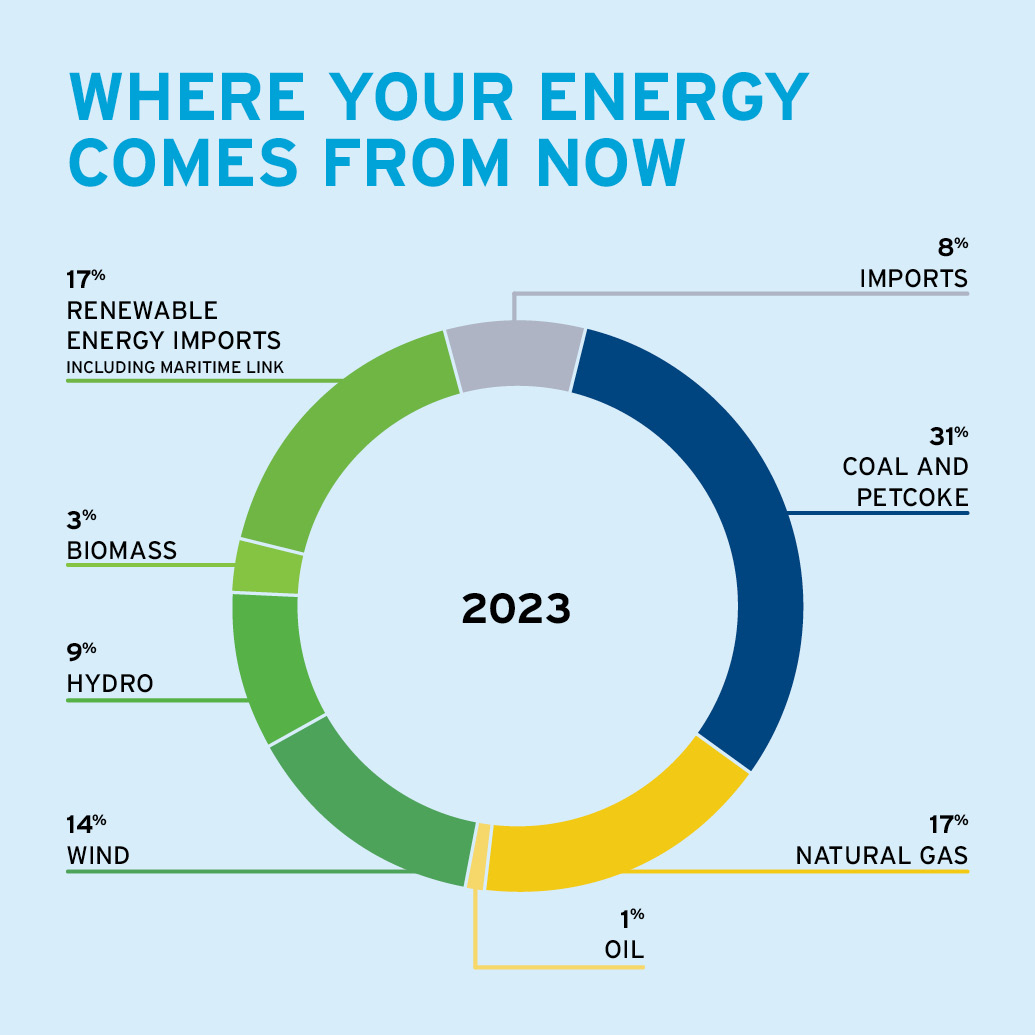1.
The Base Charge is a set charge for the cost of delivering and maintaining electricity service. There is no change to the Base Charge in 2024. It remains at $19.17 per month or $38.34 bi-monthly billing.

On April 17, 2024, the energy rate increased for our residential customers from 17.547 cents per kilowatt hour (kWh) to 17.703 cents. This change means an average increase of 0.9 percent. The change in your bill depends on how much electricity you use.
The Base Charge is a set charge for the cost of delivering and maintaining electricity service. There is no change to the Base Charge in 2024. It remains at $19.17 per month or $38.34 bi-monthly billing.
The Energy Rate will go from 17.547 cents per kilowatt hour (kWh) to 17.703 cents.
To learn more about how this rate change impacts your bill, click on our customer specific bill inserts below for more information.
Fuel is an important part of generating electricity. It’s why a portion of our power rates relate to the cost of the fuel we need to purchase to make electricity. Many different forms of fuel are used to produce electricity, including coal, oil, natural gas, biomass, wind, and hydro.
When the cost of fuel changes, the cost of producing electricity may go up or down. Over the past year, we have seen a huge increase in fuel costs due to global factors outside of Nova Scotia.
Knowing the pressures already facing Nova Scotians, we worked with the province and they decided to assist with managing fuel costs, which helped to reduce the rate impact in 2024 for our customers. The cost of fuel to generate electricity is subject to rigorous oversight through the Fuel Adjustment Mechanism and is approved by the Nova Scotia Utility and Review Board.
The Fuel Adjustment Mechanism is a program regulated by the Nova Scotia Utility and Review Board. It ensures your bill accurately reflects the true costs of producing electricity. Every year, NS Power forecasts the fuel costs of producing electricity. It’s an estimate and like any estimate, it may turn out to be too high or too low. When we tally up the actual fuel costs of producing power for the year, we use these numbers to calculate a new energy rate. Your rate may go down or it may go up.
To support our customers, we offer income-based programs, such as the HomeWarming program, as well as tools like equal billing and MyEnergy Insights to help you manage your heating bills. There are also support programs available through the government and Efficiency Nova Scotia. We continue to work with customer advocates, including the Affordable Energy Coalition, as well as the provincial government, on ways to ensure support for our customers living on a lower income. We also continue working on providing more convenience, choice, and control for customers over the energy you use.
We've already made strong progress in reducing our reliance on fossil fuels.

This rate change is related specifically to fuel costs. We know a rate increase is never welcome news when the cost of everything has gone up. The increase goes directly towards paying for the fuel used to generate electricity. Fuel costs are managed separately from general rates so that customers pay the exact cost of fuel; no more, no less.
Over the past year, we have seen a huge increase in fuel costs due to global factors outside of Nova Scotia. Knowing the pressures already facing Nova Scotians, we worked with the province and they decided to assist with managing fuel costs, which helped to reduce the rate impact in 2024 for our customers. Like all costs, the cost of fuel to generate electricity is subject to rigorous oversight and is approved by the Nova Scotia Utility and Review Board.
We know there are basic cost of living pressures on Nova Scotians right now, such as food, housing, and heating.
We’re committed to having programs in place to support electricity costs for customers who live on a low or fixed income, such as our HEAT Fund and HomeWarming programs.
We also offer tools, such as Equal Billing and MyEnergy Insights, to help customers manage their power bills.
Other support resources available through the Nova Scotia Government are the Heating Assistance Rebate Program (HARP) and Efficiency Nova Scotia.
We're committed to working with low-income advocates to find more opportunities to help Nova Scotians.
Our Path to 2030 plan—which is aligned with the province’s Clean Power Plan—will reduce our reliance on fossil fuels and help protect our customers from volatile fossil fuel prices as we move toward achieving 80% renewable energy by 2030. Along with the province, we are also working with the federal government on how they can help support Nova Scotians through the clean energy transition.